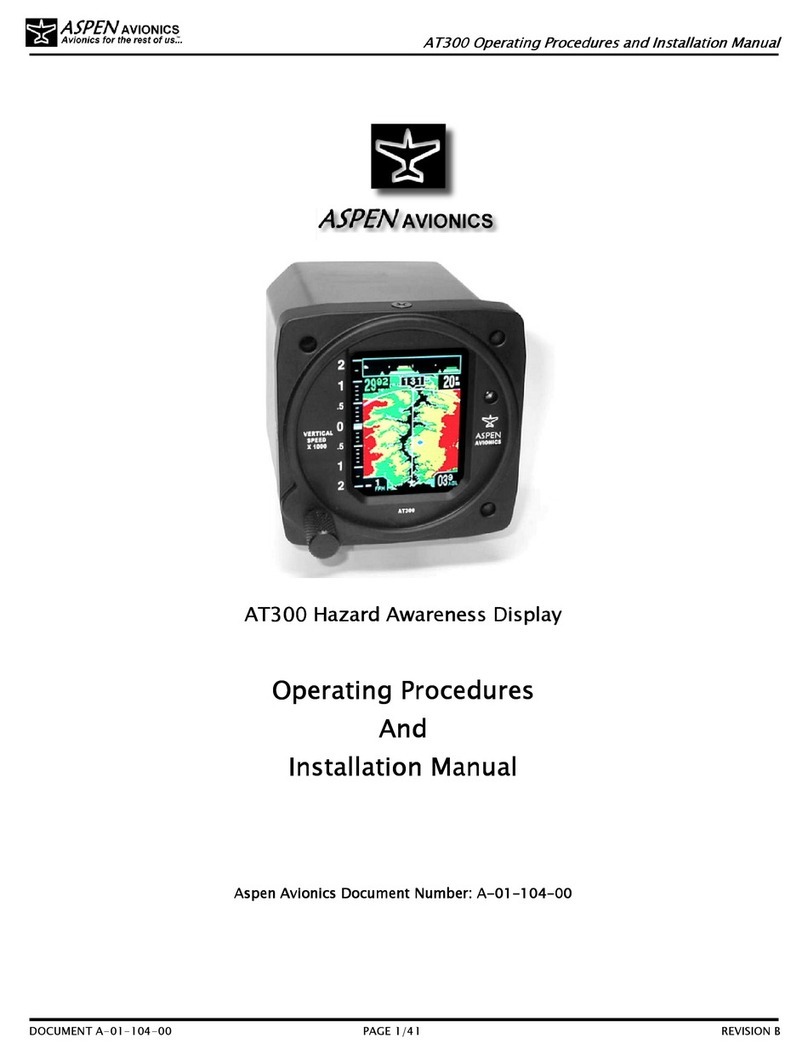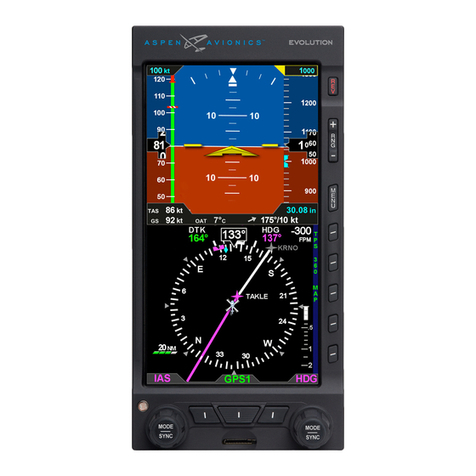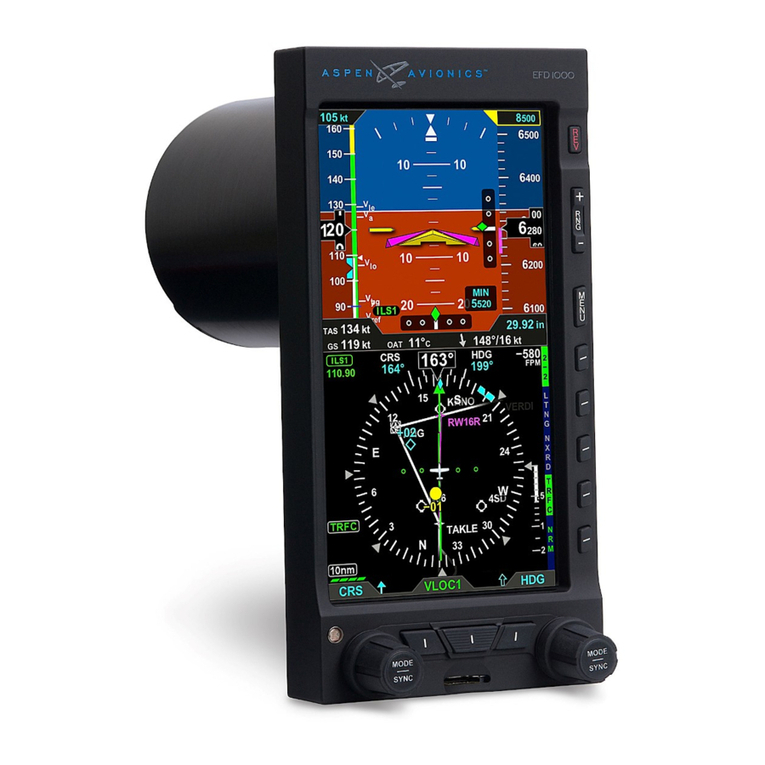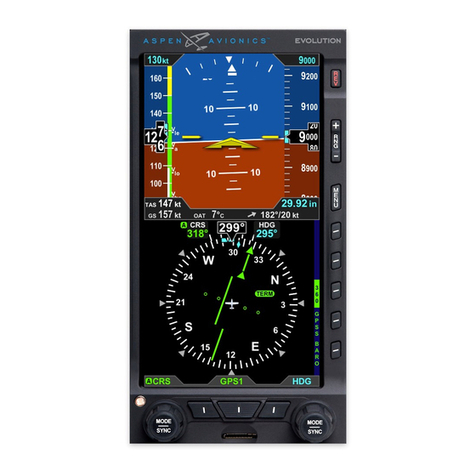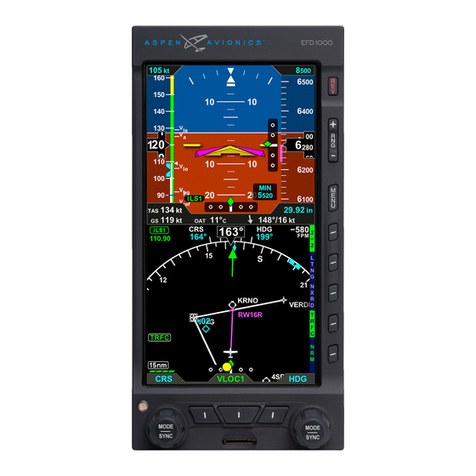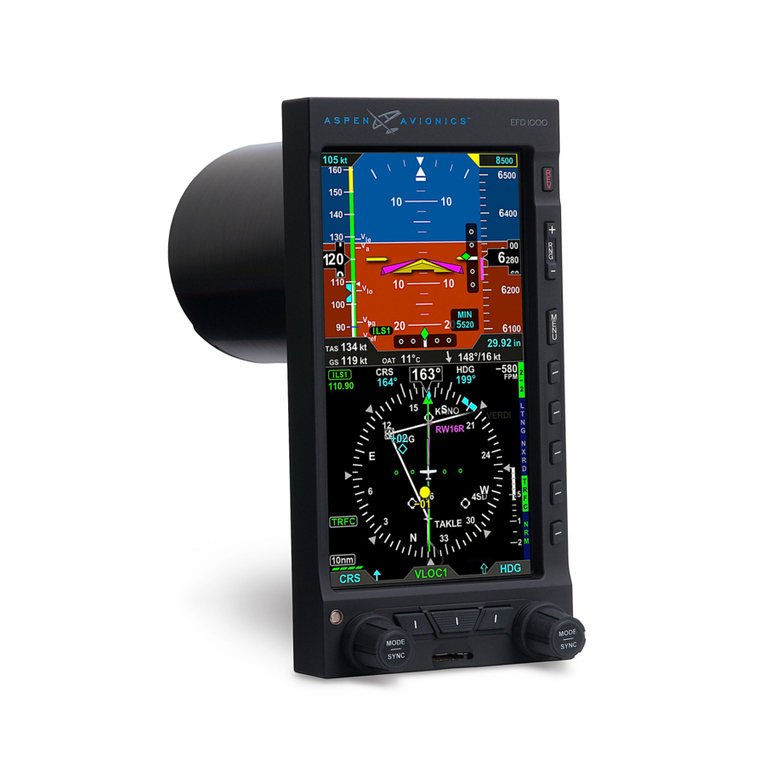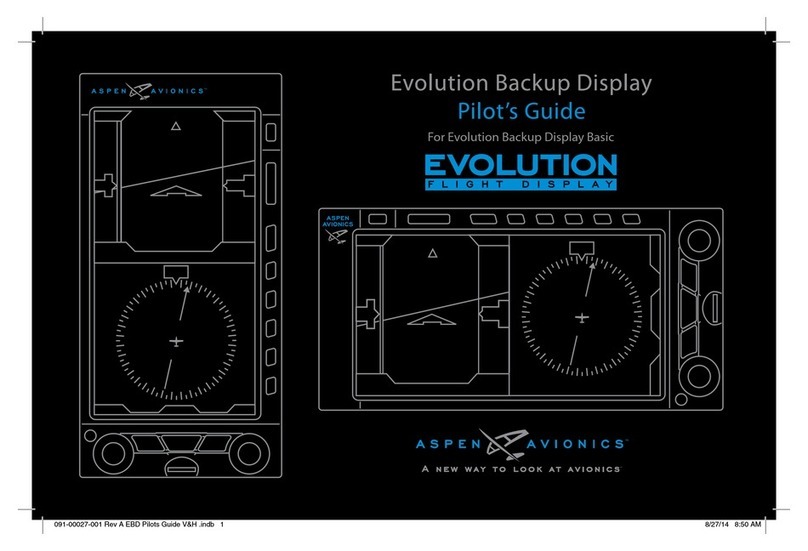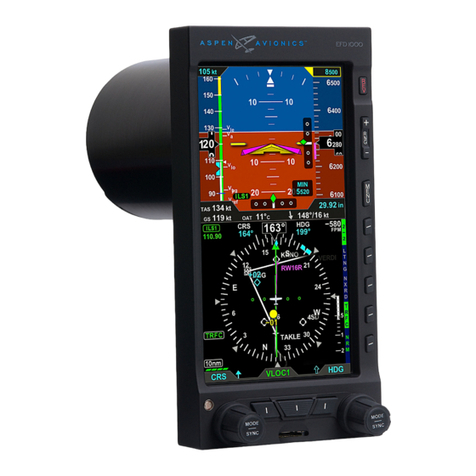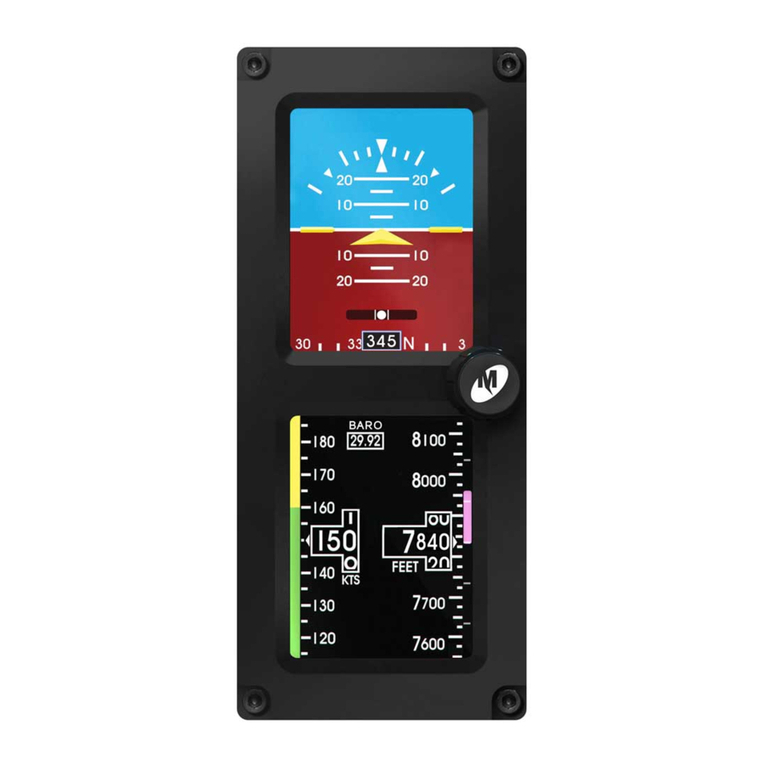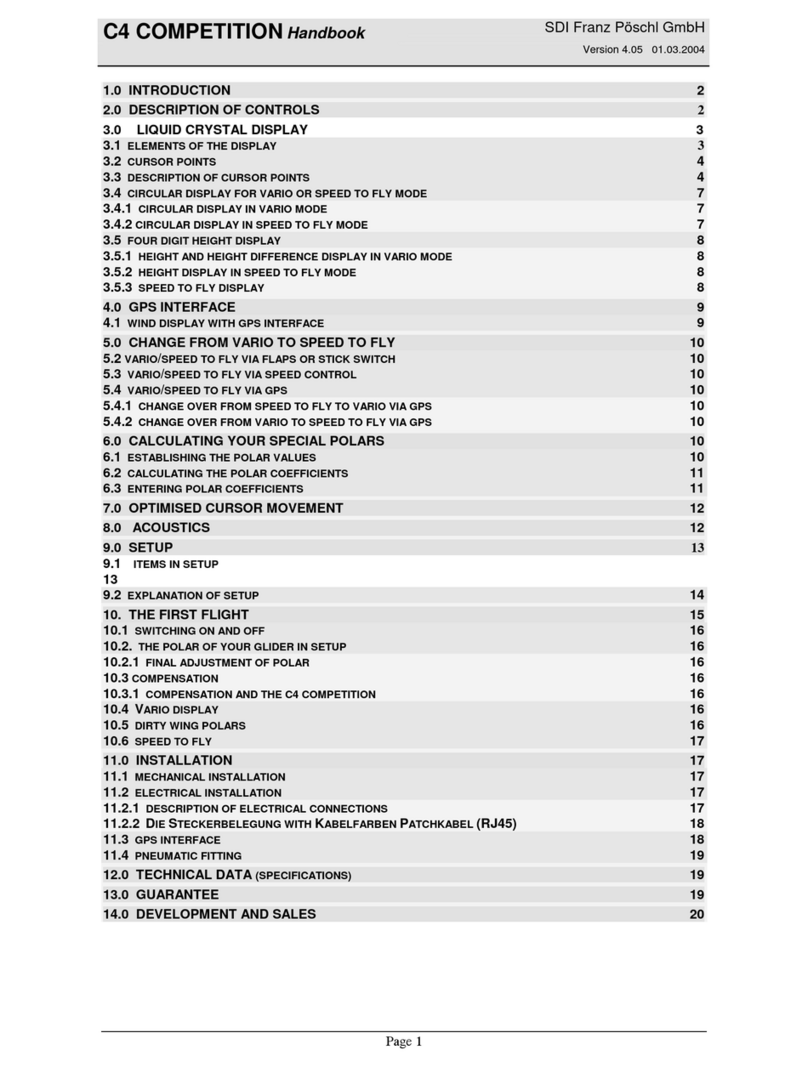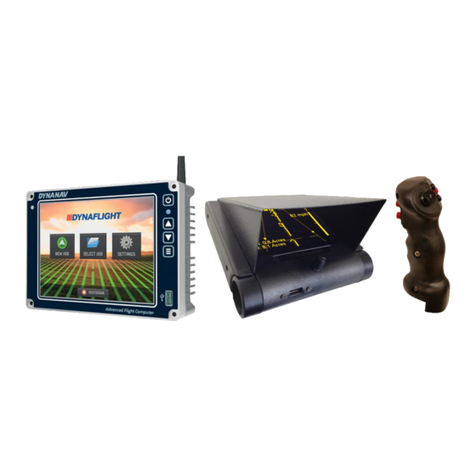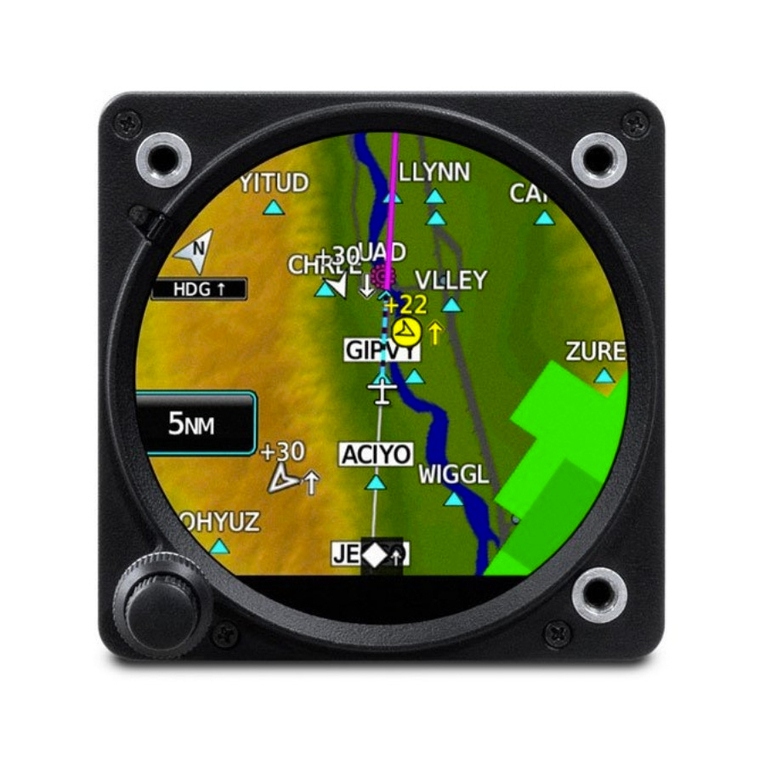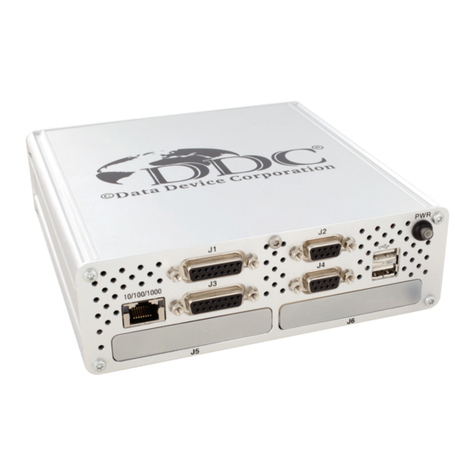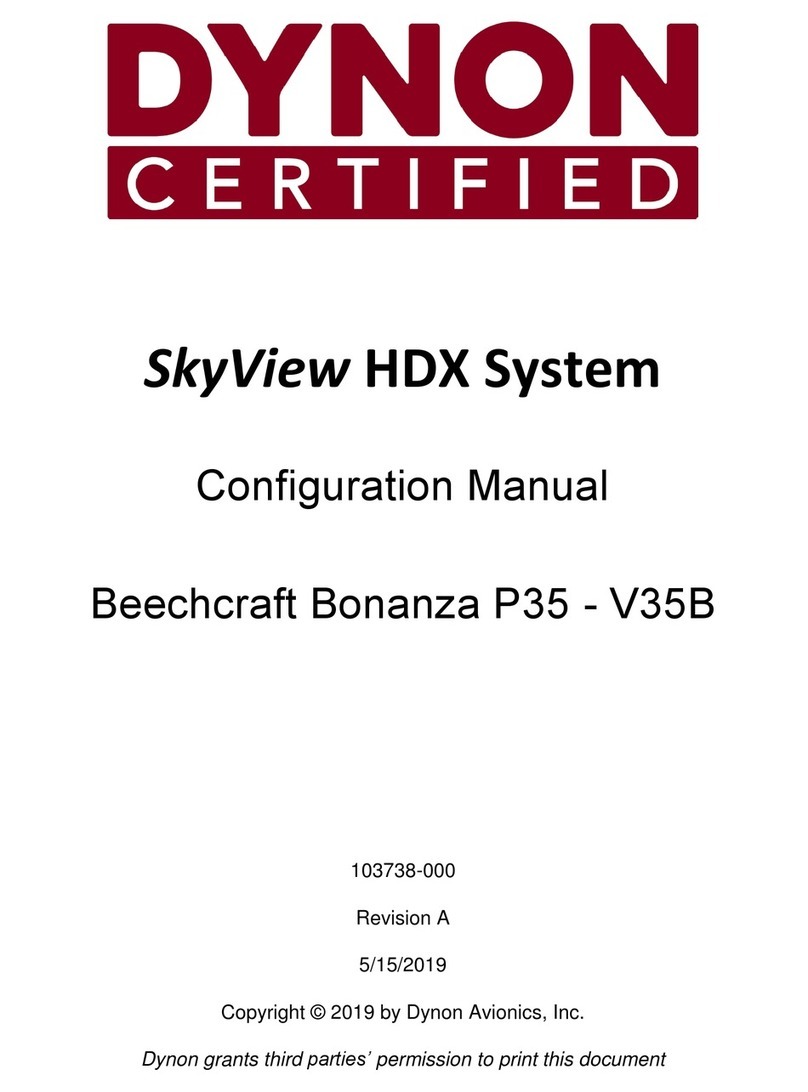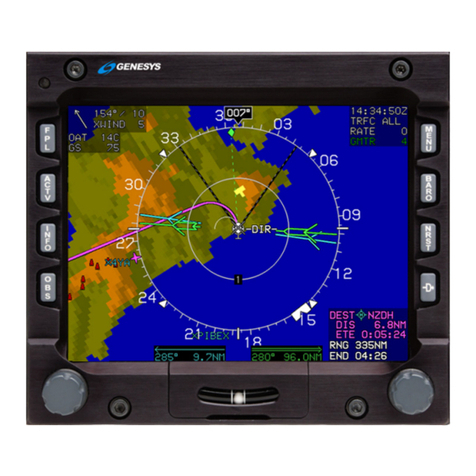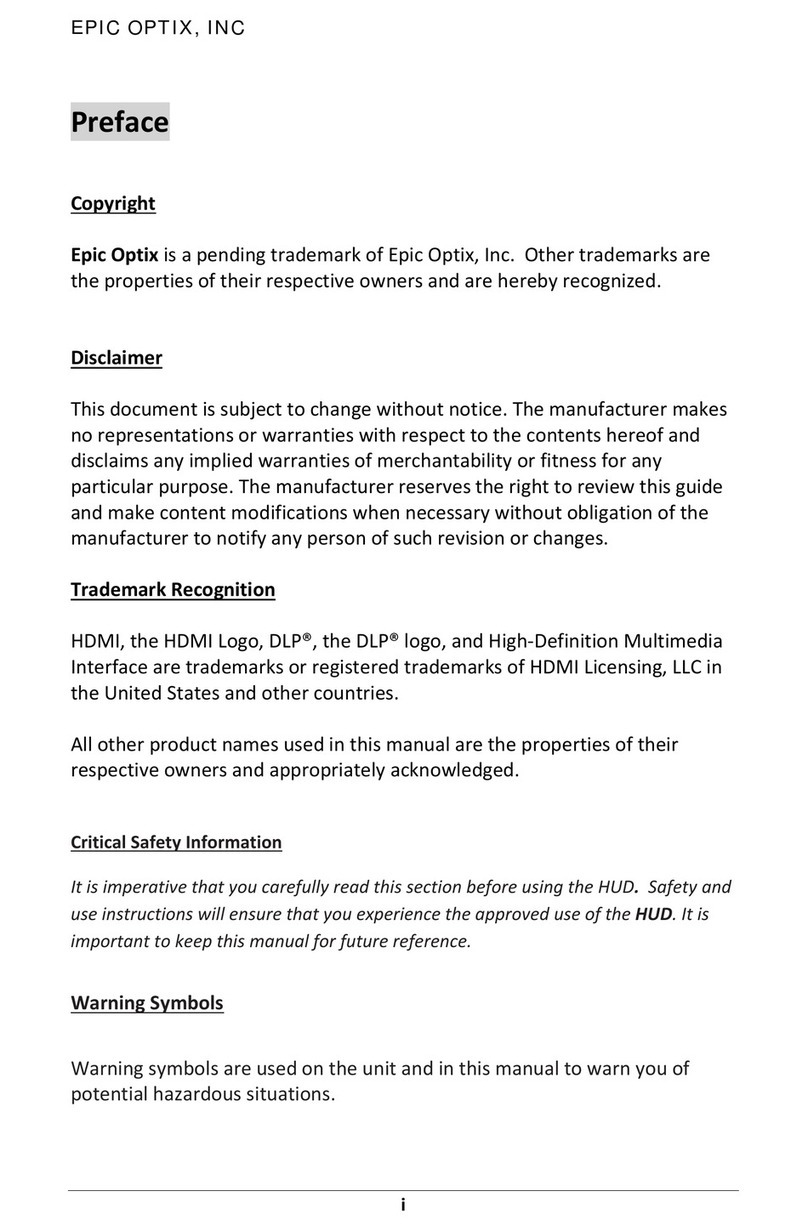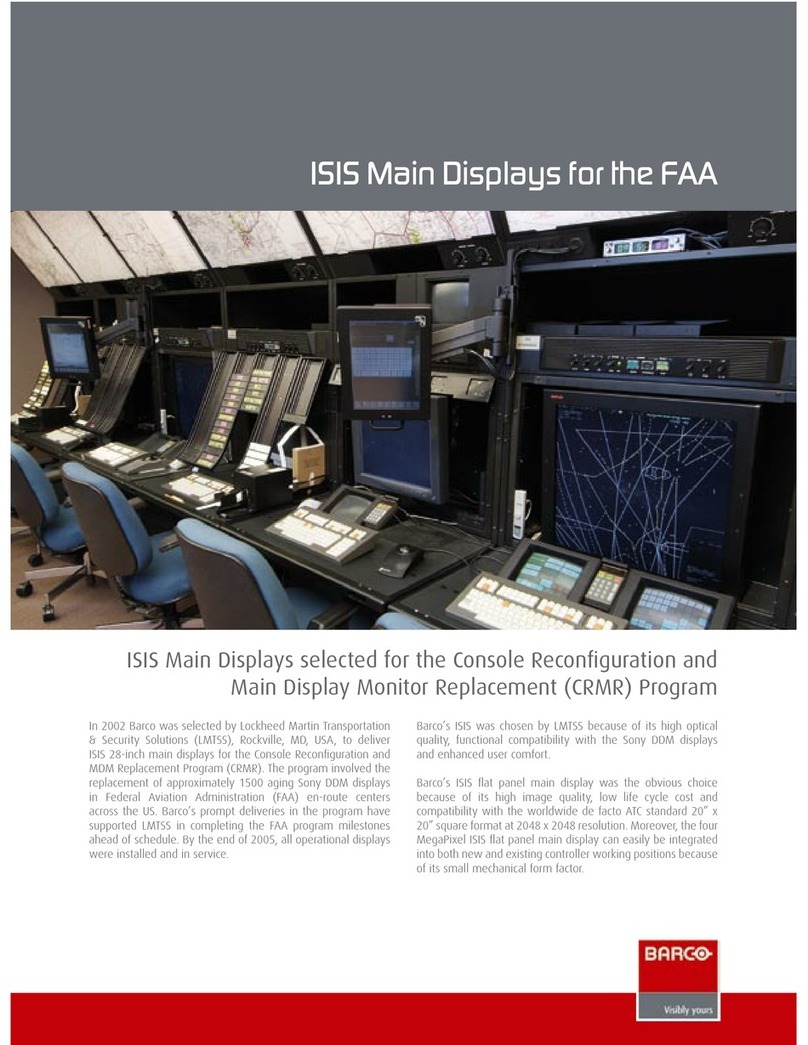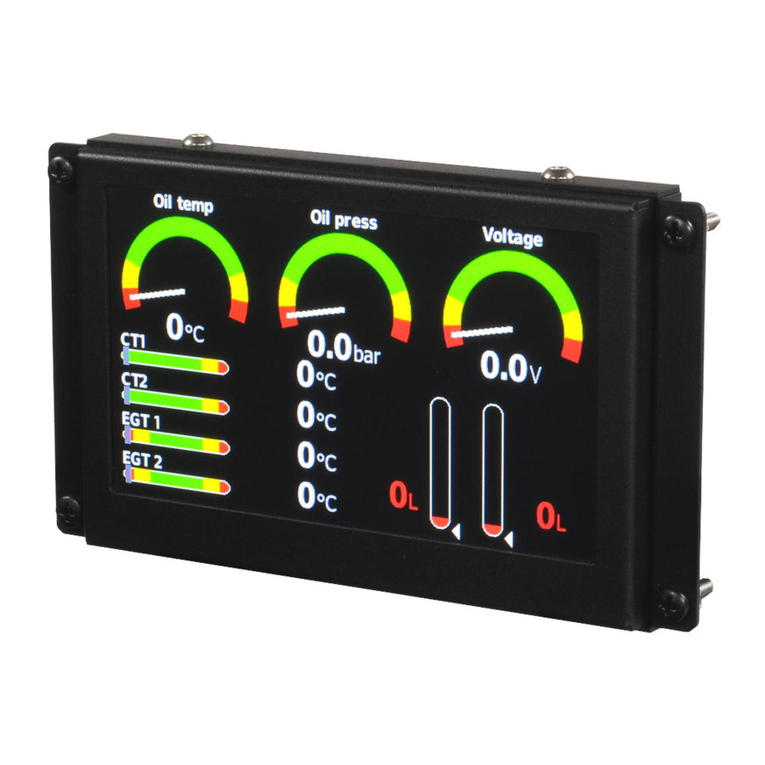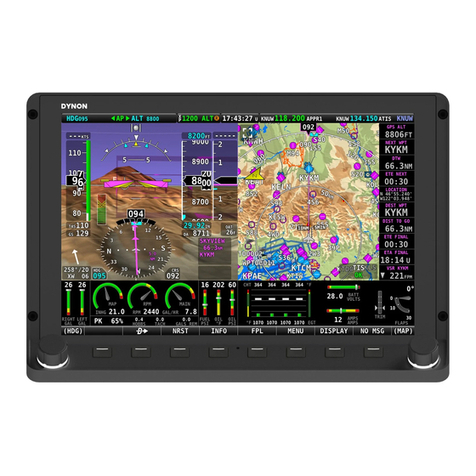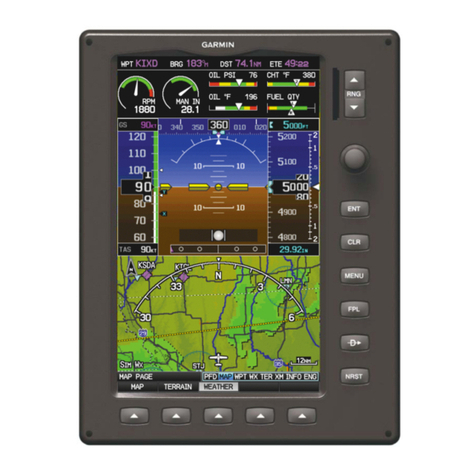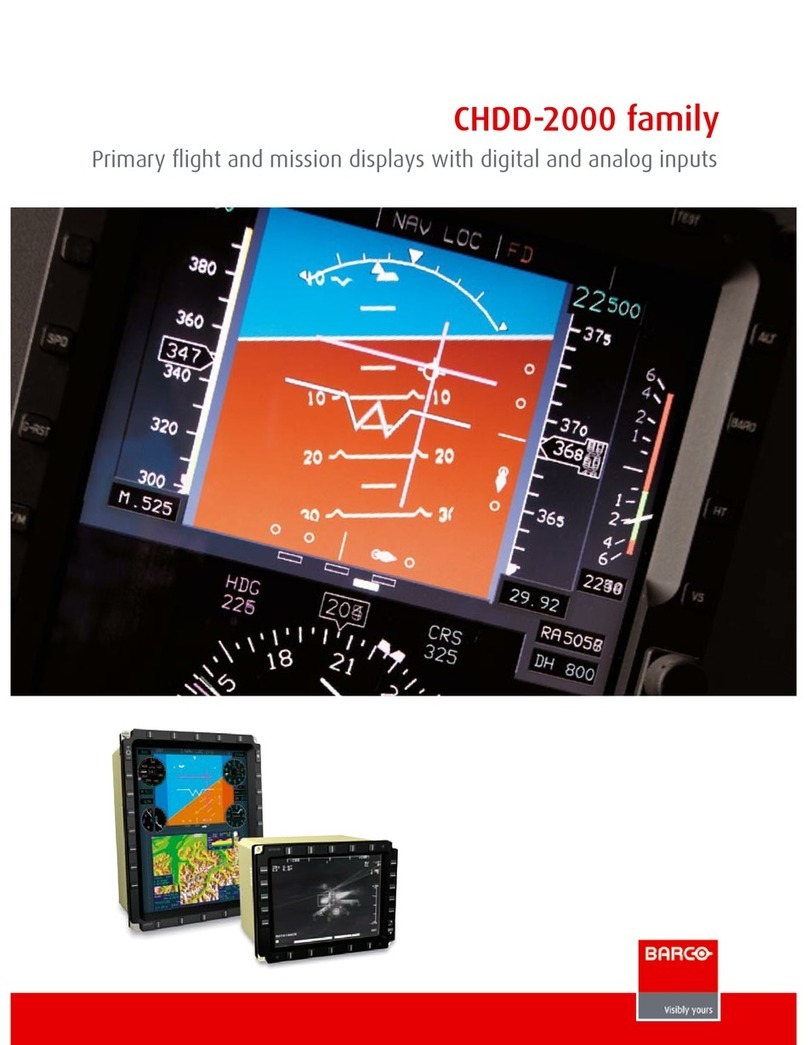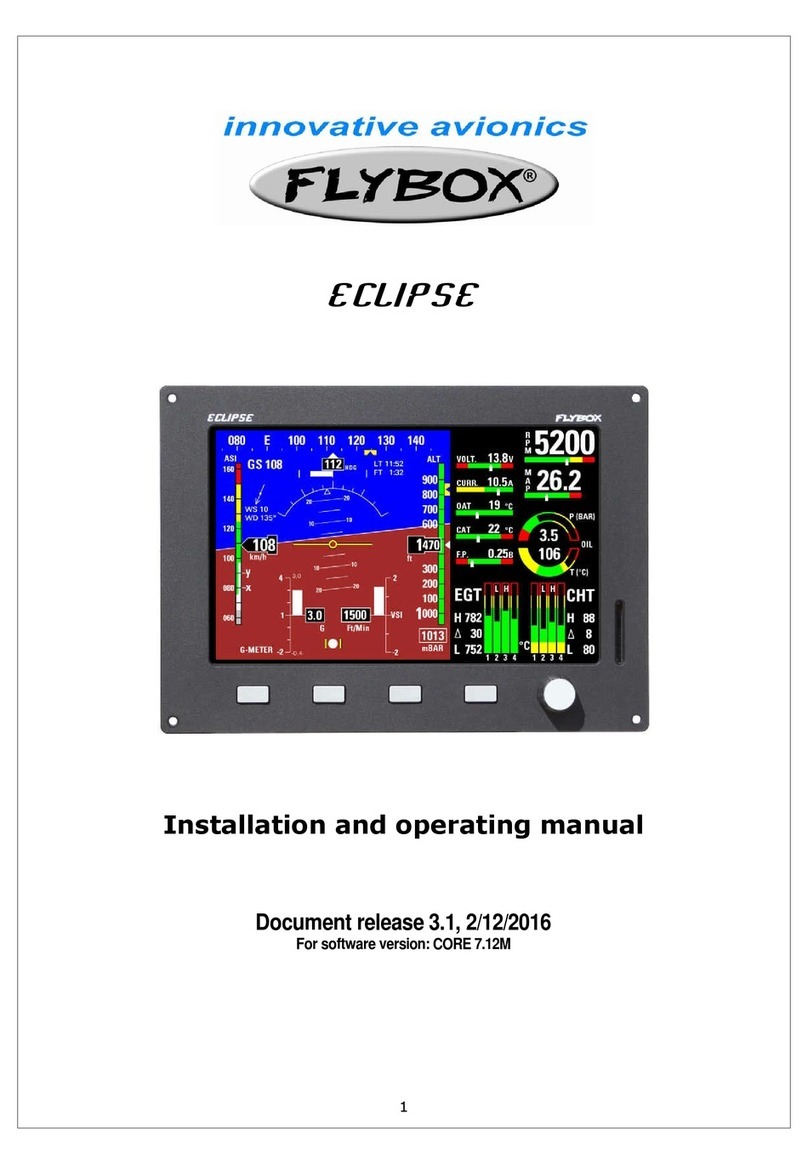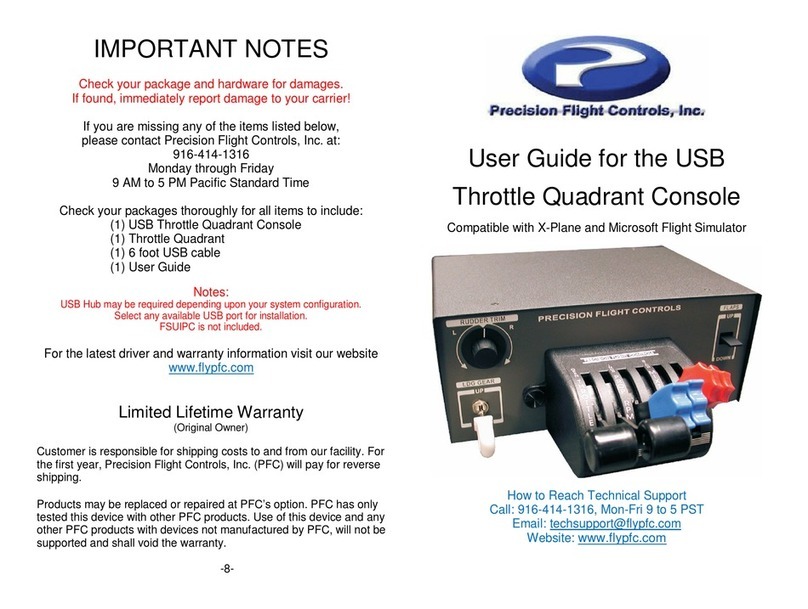
EFD1000 (Pilot) Airplane Flight Manual Supplement
DOCUMENT # A-01-179-00 PAGE 8 OF 29 REVISION A
FAA APPROVED
Date: March 17, 2008 © Copyright 2008 Aspen Avionics Inc.
3 Emergency and Abnormal Procedures
3.1 In-Flight AHRS Reset
ATTITUDE ................................................................Maintain straight and level flight
MENU........................................................................Select “GENERAL SETTINGS” Page
“AHRS: RESET?” LINE SELECT KEY......................PRESS
“AHRS: RESET?” LINE SELECT KEY......................PRESS AGAIN TO CONFIRM RESET
NOTE:
When the EFD1000 AHRS is reset in flight, it performs an
abbreviated initialization.
During the initialization, the aircraft should not be
subjected to excessive turn rates. Typical in-flight
initialization will take approximately 30 seconds, but can
take longer if the reset is initiated while banked or
maneuvering.
The AHRS reset is considered complete when the
EFD1000 attitude and heading is once again displayed,
stable, and correct with respect to the horizon or standby
indicator.
3.2 Pitot/Static System Blockage
CAUTION:
Most light aircraft have only a single pitot and static port
available for flight instrument use. As such, the pitot and
static lines used by the EFD1000 system are shared with
those lines used by the standby airspeed indicator and
altimeter. Should these lines become blocked, such as
might occur due to inadvertent icing encounter, both the
standby indicators and the EFD1000 indicators will
display erroneous airspeed and/or altitude information.
In the event of erroneous airspeed and altitude
information at the EFD1000, the EFD1000 Attitude Monitor
will present a “CROSS CHECK ATTITUDE” annunciation.
A static line blockage will result in altitude remaining fixed and a zero vertical speed despite
aircraft pitch and/or power setting changes. In addition, IAS indications will be incorrect if
the static line is blocked. Errors will typically be noticed in the climb or descent phase of
flight. When descending, ambient pressure increases which will result in the indicated
airspeed reading less than the actual airspeed. The opposite effect will be observed in a
climb.
A pitot line blockage will result in the airspeed indicator behaving like an altimeter when the
aircraft altitude changes, and it would not respond to airspeed changes.
If a blocked pitot or static line is suspected, take the following actions:
ALTERNATE STATIC SOURCE...............................SELECT
PITOT HEAT.............................................................ON
